Two equal and opposite forces F and −F act on a rod of unifrom cross-sectional ara A, as shown in the figure. Find the (i) shearing (ii) longitual stress on the section AB.

(i) As the net force acting on the rod is zero, it is in equilibrium. Let the tesnion in the segment AB be F−1. Applying Newton's 2nd law for the segment
Fnet=F1−F=ma
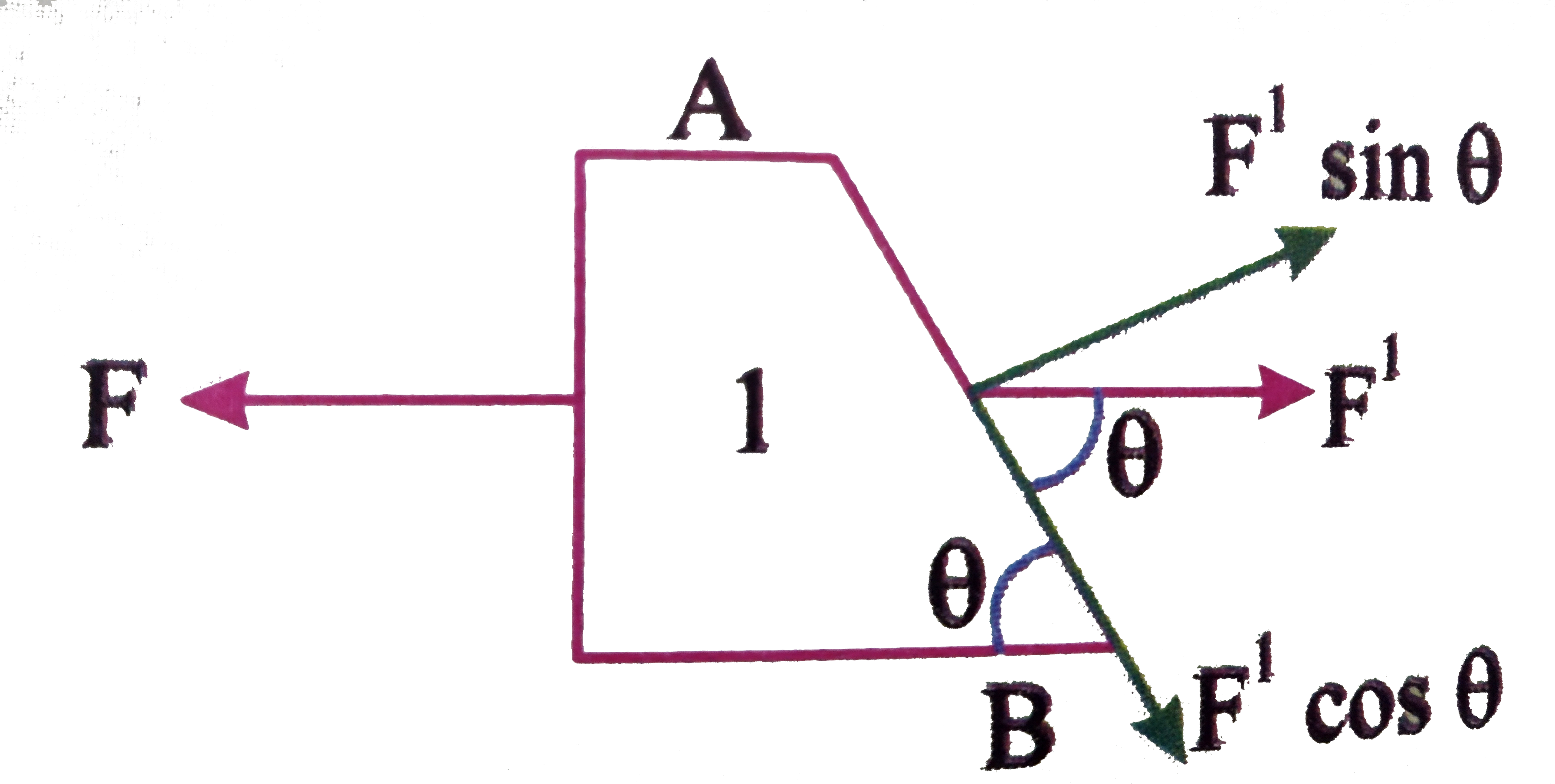
where, a=0, this given, F1=F
Resoliving the force F1 parallel and perpendicular to the given area AB(=A1,say),
We have Ftan=F1cosθ,Flong=F1sinθ
Then, Pshearing=FtanA1=F1cosθA1
where, A1=Asinθ and F1=F
This gives, Pshearing=FsinθcosθA
(ii) Similarly, Plong=FlongA1
=F1sinθA1 where A1=Asinθ and F1=F
This gives, Plong=FAsin2θ
Topper's Solved these Questions
- BOOK - NARAYNACHAPTER - MECHANICAL PROPERTIES OF SOLIDSEXERCISE - C.U.Q74videos
MECHANICAL PROPERTIES OF SOLIDS
- BOOK - NARAYNACHAPTER - MECHANICAL PROPERTIES OF SOLIDSEXERCISE - LEVEL-I (C.W)37videos
MECHANICAL PROPERTIES OF SOLIDS
- BOOK - NARAYNACHAPTER - MECHANICAL PROPERTIES OF FLUIDSEXERCISE - EXERCISE - III30videos
MECHANICAL PROPERTIES OF FLUIDS
- BOOK - NARAYNACHAPTER - MOTION IN A PLANEEXERCISE - Level-II(H.W)31videos
MOTION IN A PLANE
Similar Questions
A force F is acted on a body as shown in the figure. Find the impulse of the force in first four seconds.
 View Solution
View SolutionTwo equal opposite forces each of magnitude F is applied along a rod of transverse sectional are A . The normal stress to a section PQ inclined θ to transverse section is -
View Solution
Knowledge Check
- Question 1 - Select One
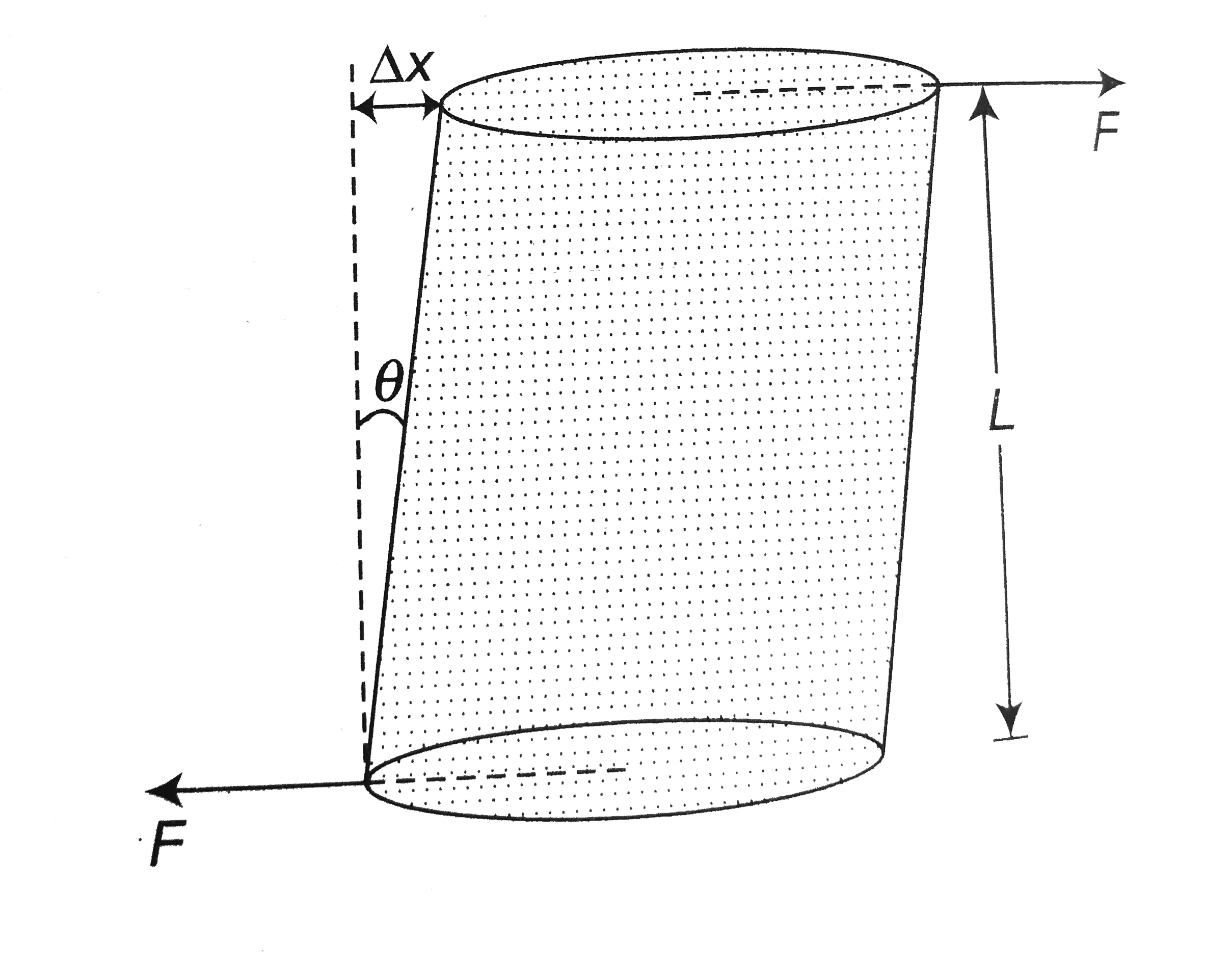
If two equal and opposite defirming forces are applied parallel to the cross sectional area of the cylinder as shown in the figure, there is a relative displacement between the oppsite faces of the cylinder. The ratio of Ax to L is known asAlongitudinal strainBvolumetric strainCshearing strainDPoisson's ratio - Question 2 - Select One
A uniform cylindrical rod of length L and cross-sectional area by forces as shown in figure.
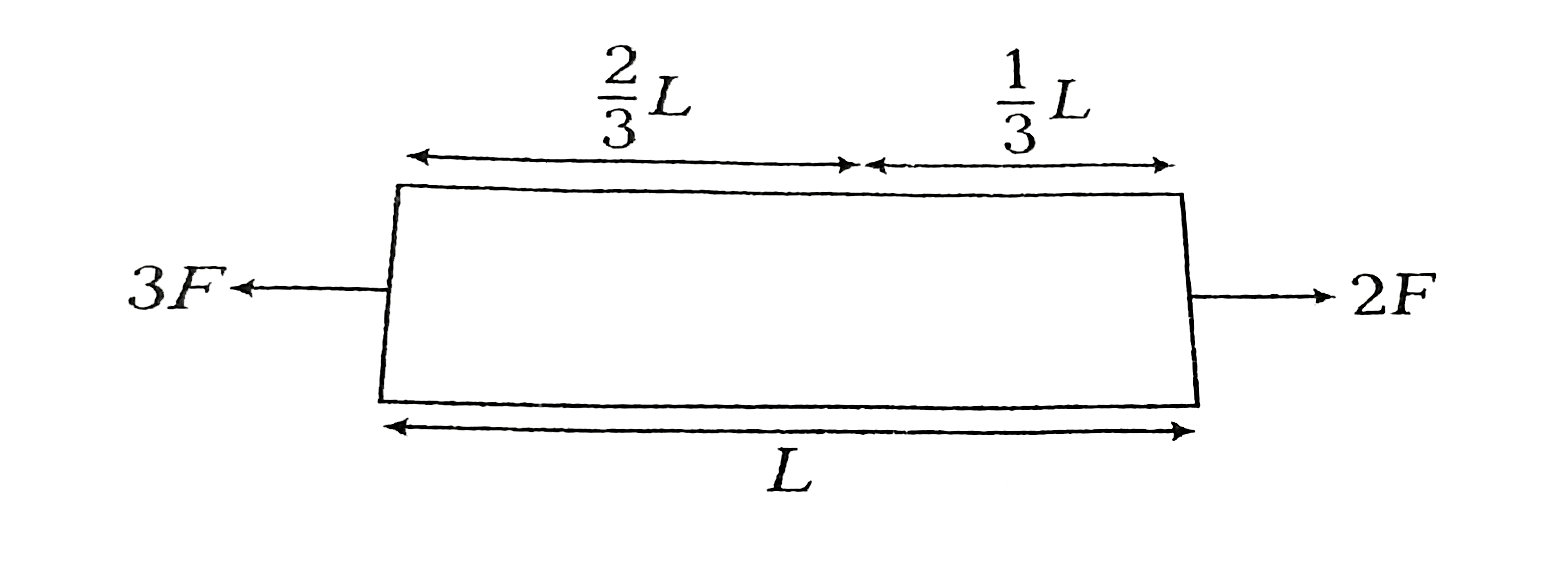
The elongation produced in the rod isA3FL8AYB3FL5AYC8FL3AYD5FL3AY - Question 3 - Select One
Two equal and opposite point forces applied at mid- points of the ends of a rod of square cross shown. Consider the dotted section ABCD. If the rod is cut across this Gloss section, the force exerted by the right part of the rod on left part across this cross section is
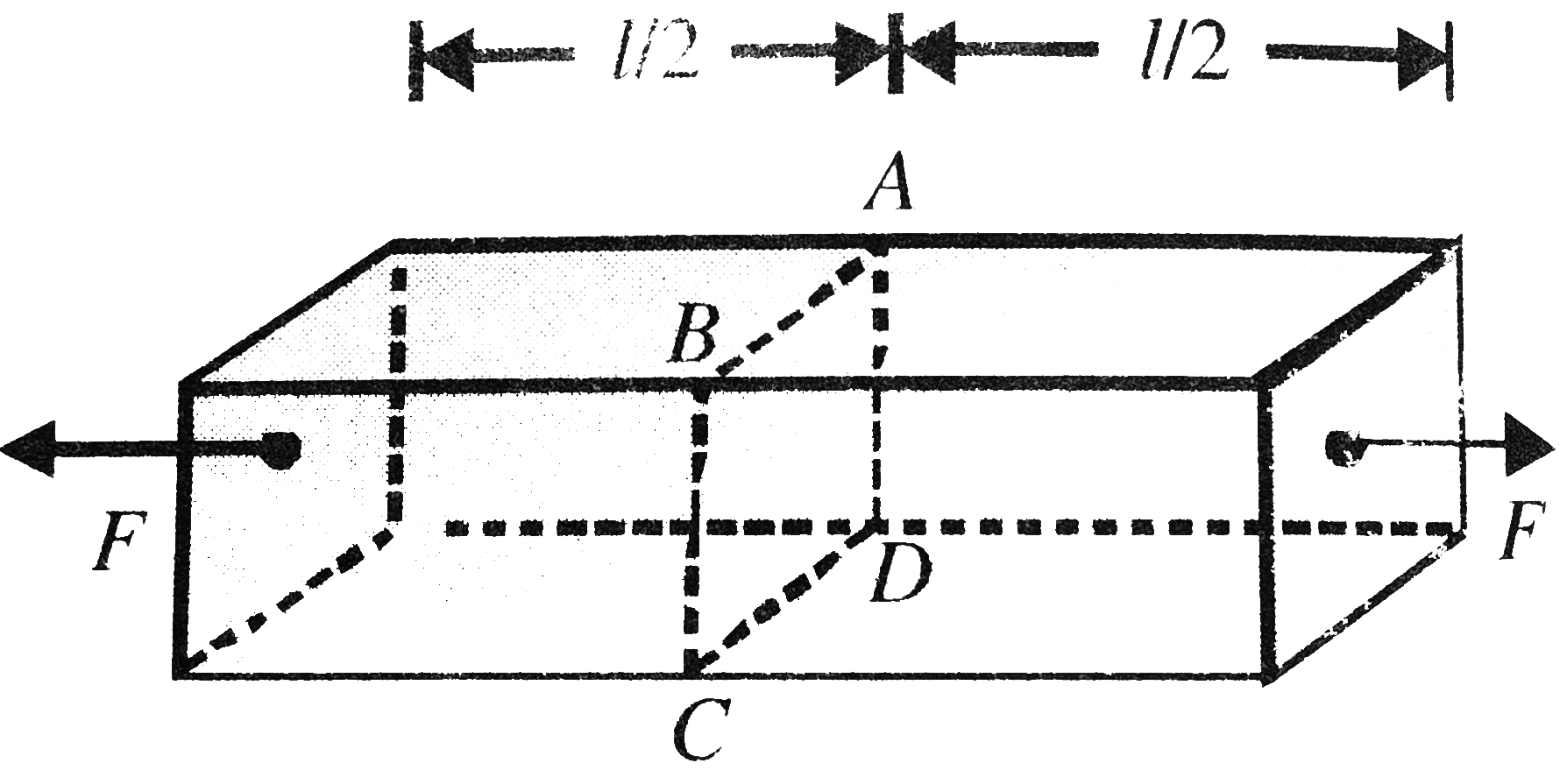 Aacting at point passing through cross section acting at point passing through cross section ABCDBacting at a point but not passing through the centre of cross section ABCDCuniformly distributed across the cross section ABCDDnon-uniformly distributed across the cross section ABCD
Aacting at point passing through cross section acting at point passing through cross section ABCDBacting at a point but not passing through the centre of cross section ABCDCuniformly distributed across the cross section ABCDDnon-uniformly distributed across the cross section ABCD
The V – I graph for a wire of copper of length L and cross -section area A is shown in the figure below . The slope of the graph will be
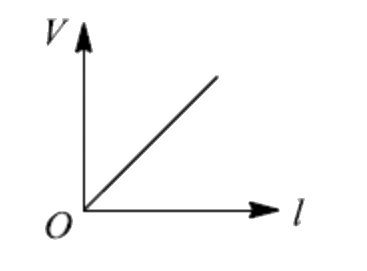 View Solution
View SolutionA bar of cross-section A is subjected two equal and opposite tensile forces at its ends consider a plane section of the bar whose makes an angle θ with the axis of the bar.

(a) what is the tensile stress on this plane ?
(b)what is the shearing stress on this plane ?
(c )for what value of θ is the tensile stress is maximum ?
(d) for what value of θ is the shearing stress maximum ?View SolutionTwo forces, each equal to F, act as shown in figure. Their resultant is
 View Solution
View SolutionTwo forces F1 and F2 are acting on a rod abc as shown in figure.
 View Solution
View SolutionTwo rods (one semi-circular and other straight) of same material and of same cross-sectional area are joined as shown in the figure. The point A and B are maintained at different temperature. Find the ratio of the heat transferred through a cross-section of a semi-circular rod to the heat transferred through a cross section of the straight rod in a given time.
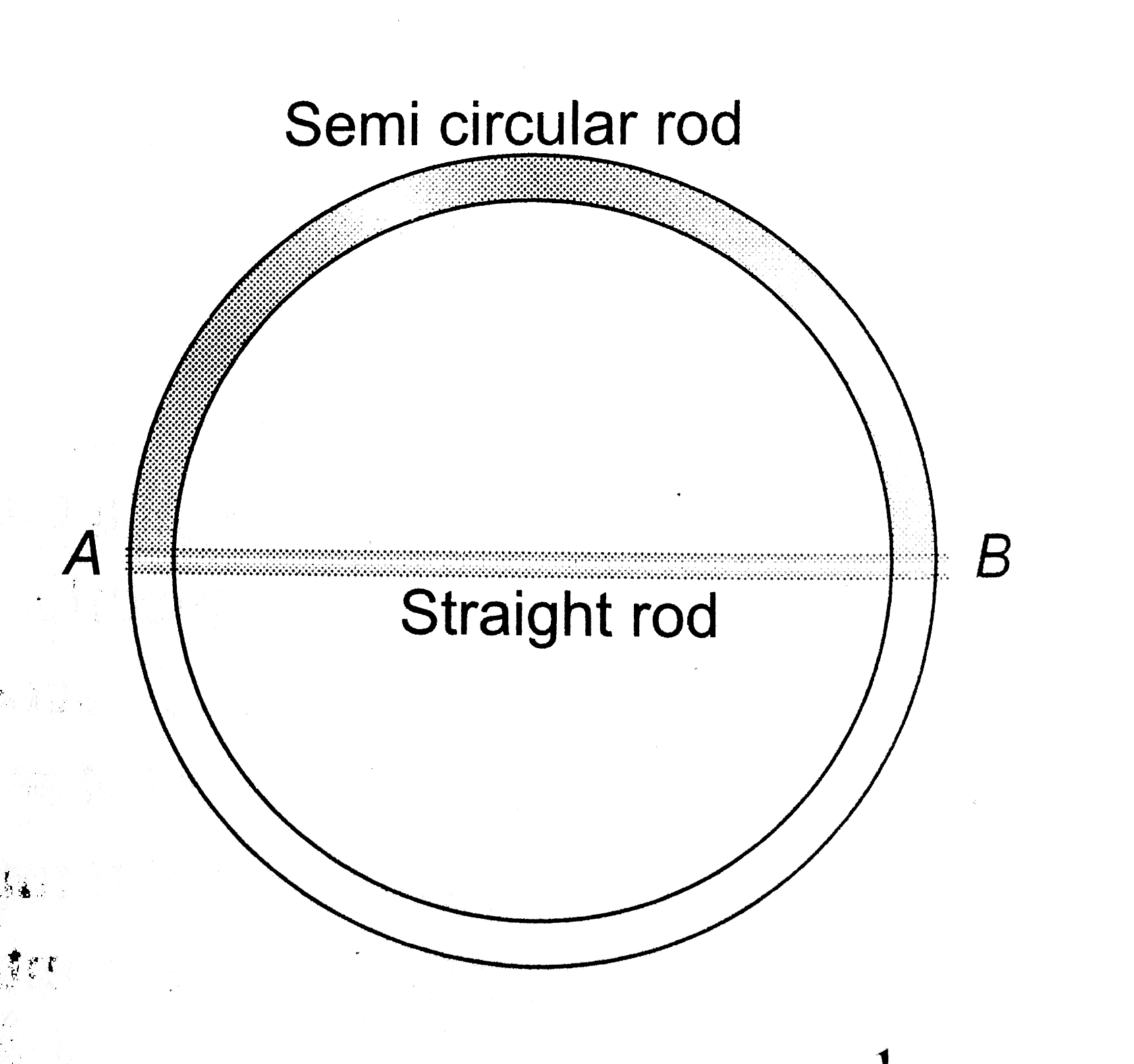 View Solution
View Solution

